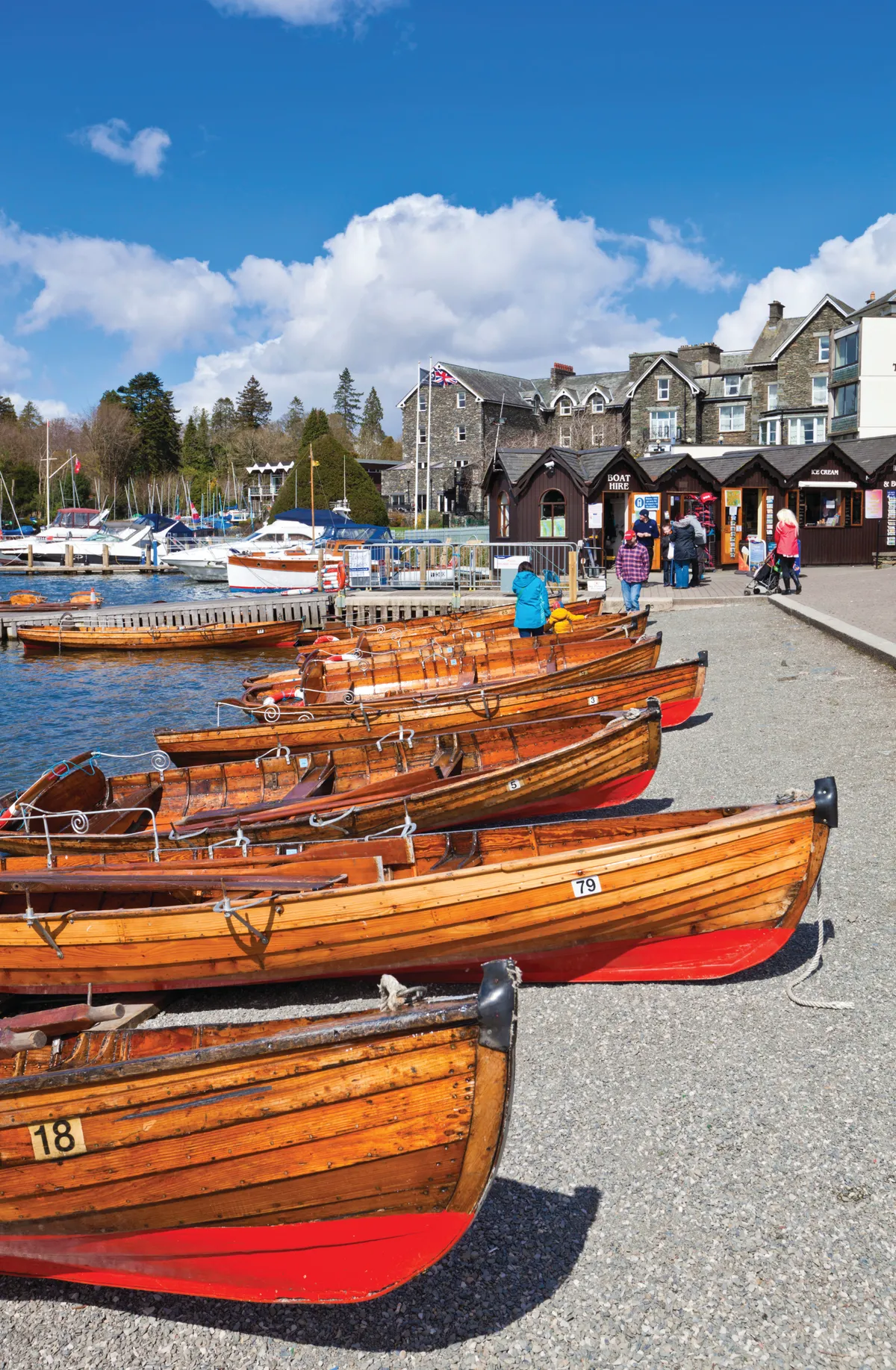You wouldn’t be mistaken inthinking that you could do with more than a weekend to experience the Lake District – after all,at 912 square miles, it is the UK’s largest national park, as well as its busiest, attracting some 19.17 million visitors per year. However, you can get a good injection of much of what the Lakes has to offer in 48 hours, and Bowness-on-Windermere is an excellent base for a flying visit.
Situated on the east coast of Lake Windermere, you are an easy walk away from stunning vistas, a short drive from historic sights and heavenly antiques shops and, of course, the water is right at your feet.

What to do in Windermere?
St Martin's Church
Arrive in the morning, and get your bearings with a stroll into town. The centre thrives in the summer, so if you want to make the most of your 48 hours, it’s wise to visit in the low season, when you won’t be slowed down by crowds or queues. Take in the glorious sight of St Martin’s Church, a historic house of prayer that dates back to the 15th century, but which owes much of its present aesthetic to a 19th-century renovation. The magnificent stained glass of the East Window was restored at this time, and it remains one of the church’s finest treasures.

Browse shops and galleries
As well as the usual souvenir shops, Bowness and the neighbouring town of Windermere offer myriad galleries and interiors boutiques – Cook House Gallery and Capella Interiorsare just two such highlights.

Take a ferry tour
At the water’s edge, hop on a ferry for a tour of the lake – there are several options to choose from, but the 90-minute Bowness-to-Lakeside cruise runs year round (weather permitting), and offers beautiful views around the south of the water.
Windermere Jetty
Alternatively, head to Windermere Jetty, a new museum opening this spring. It promises a fascinating take on the story of the lake, focusing on its historic boats. Anyone with an interest in sailing and boating will be eager to take a ride out onto the lake aboard Osprey, the museum’s restored Edwardian steam launch. Be sure to book early to guarantee a spot.

Take a hike
After lunch, and checking into your chosen hotel or B&B, stretch the limbs with a jaunt up Orrest Head, the hill and viewpoint about which famed fell walker Alfred Wainwright wrote, ‘It was a moment of magic, a revelation so unexpected that I stood transfixed, unable to believe my eyes.’ Walking shoes are a good idea as the terrain is mixed, but the route is only about one and a half to two hours going up, and half that time coming down.
Aim to reach the summit just before dusk to be rewarded with the sight of the sun setting behind the hills and mountains across the water (but do remember a torch for your descent). When the skies are clear, the vista stretches the length of Windermere, and includes Scafell Pike, Old Man of Coniston and the Langdale Pikes. It’s easy to lose hours gazing out across the water and fells. Indeed, if time allowed, the jaunt could be extended by taking an alternative route down. However, on this whistle-stop tour, it’s best to head back for some well-earned dinner.

Blackwell The Arts & Crafts House
After breakfast, head to the car for the five-minute drive to Blackwell The Arts & Crafts House. Designed by English architect and artist Mackay Hugh Baillie Scott and completed in 1901, Blackwell is a paragon of the Arts and Crafts movement. Originally created as a lavish holiday retreat for a wealthy Manchester brewer and his family, today it survives with almost all of its original decorative features intact.
The attention to detail is everything you would hope. There are handcrafted tiles in the inglenook fireplaces, intricately carved stonework and wood panelling, mosaic floors, and the plaster work of the White Drawing Room is a must see. There are Morris & Co pieces to be enjoyed, but also designs from Ruskin Pottery, Archibald Knox and William De Morgan alongside lesser-known local crafters, such as Annie Garnett and Arthur Simpson of Kendal.

You might also like the forgotten women of the Arts & Crafts movement
Shop for antiques
Wonderful antiques shopping awaits you nearby. A short journey east to Kendal delivers such delights as The Antiques Emporium, which offers decorative pieces and furniture as well as Annie Sloan paints, and The Old Curiosity Shop, a specialist in collectables. Or, travel south, to Yew Tree Barn – a centre with antique, salvage and reclamation pieces, as well as exciting artisans’ works.
You might also like the UK's best antiques and vintage shops
Where to stay in Windermere
The Belsfield
Laura Ashley’s second foray into the world of luxury hotels (the first is The Manor in Elstree), The Belsfield sits in a prime position beside Lake Windermere. The grand Italianate hotel, which dates back to 1845, has recently been updated by the Laura Ashley design team so, when I visited in November last year, I was looking forward to superbly stylish rooms, as well as stunning views across the water. And I was not disappointed.
The finish of the rooms is softly indulgent – statement wallpapers in gentle hues, glamorous mirrors and chandeliers, and elegant furniture, which coordinates with, rather than matches, the luxurious bedding. This is all adeptly pulled together to complement the original architecture while, importantly, not distracting from the room’s most memorable feature: its uninterrupted view of the lake.
Both the hotel’s casual brasserie and the impressive dining room were a delight. The menus quite rightly celebrate the local Cumbrian produce and I was particularly taken with the fine dining menu – all five courses (including an amuse-bouche and a palate cleanser) were exquisite. Breakfast was fresh and enticing – both the continental and cooked options were delicious and set us up for a day’s sightseeing.

